The Grad
Designed by Dick Wyche of "Wyche & Coppock Ltd" Nottingham in the early 1950s, the Graduate was intended to be built either professionally or at home from kit or plans. Although intended to be one design, the tolerances allowed in the plans to make the task of home building easier have resulted in many attempts being made to produce faster hull shapes. The effect often on the owners confidence than on pure boat speed.
| |
|
|
|
Built using frames and stringers to which the ply skin is attached. This construction method is still used and produces a strong and durable product especially if modern adhesives are employed.
N.B. In this plan from the 1950's the flat fore and aft decks and the large buoyancy access panels set into the deck. Later, buoyancy tank hatches were fitted into the bulkheads.
|
|
Since the class rules provide minimum interference with deck and cockpit layout, many people have exercised their whim and it is almost impossible to find any two boats exactly the same. It is possible to find side decks which are either wide, narrow or rolled; side seats and transoms raised to accommodate a main sheet horse. This trend to customise deck and cockpit layout was introduced by "Wyche & Coppock Ltd" when they produced the "Dandy-Grad" in the 1960's.
|
|
|
|
|
|
|
Still of traditional construction, incorporated many deck and cockpit layout refinements, including; raised foredeck, hatch covers fitted into bulkheads and a lowered aft deck.
|
|
Originally fitted with a swivelling wooden mast and small jib the Graduate class adopted a large genoa in the 1960's and permitted metal spars which are now used almost universally.
|
|
|
|
|
In the late 1970's new design ideas were being incorporated into the class. Francis produced the Rebel which stands out for its cabinetmaker quality of construction with the use of various coloured woods laminated together for even such mundane items as floor stiffening strips. Laminated curved thwarts were also a common feature. Francis also incorporated hull shape changes devised by Adrian Baker. It was Adrian who brought all the innovations together and while at Robsons on Windermere developed the Alpha.
|
|
| The Super Grad |
|
|
Wyche & Coppock Ltd, in response to demand for a low maintenance option, produced a GRP version known as the Super-Grad. Some were made by Wyche & Coppock themselves but many were moulded by Bourne Plastics of Derby and can be identified by a logo plate set into the centreboard case just under the thwart. A GRP hull with wooden decks, know as a Composite, was also available.
|
|
|
|
|
The Alpha is a new construction concept in which a central longitudinal beam, which incorporates the centreboard case, is used as a support for the transom bulkheads and the two extra frames forward of the from bulkhead. A preformed bow panel is fitted together with precut bottom and sides without the need for stringers or chines. This method which also includes the fitting of longitudinal stiffeners to form side buoyancy forms a very rigid structure. The hull shape is that which Adrian considered to be the optimum and he was a National Championship winner more than once.
|
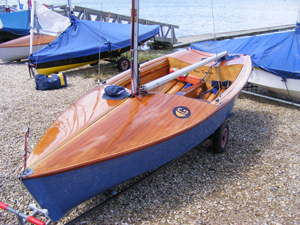
|
|
|
Dave Butler of Butler Boats is still building wooden Alphas. |
|
|
|
|
In more recent years the 'Sprinter' GRP Graduate was produced; sold by Seven Oaks Boats and later, Capel Sailing. This has since been superseeded by the Rooster Grad.
|
|
|
|
|
|
|
Recent developments within the class include the acceptance of Kevlar sail cloth, and the introduction of a new sail design (further details of this can be found on this site).
|
|
|
The boat has been developed over the past 50 years and yet has kept the basic principles of the original design. In order to keep the Graduate alive we must make use of the latest materials and construction methods.
|
|
The 'Rooster Grad' is the latest additional to the graduate family, designed by Phil Morrison, built by Ian Teasdale of the Boatyard at Beer and marketed by Steve Cockerill of Rooster Sailing, the new boat is regenerating the class. The Rooster Grad sees signigicant changes to the deck layout, reducing the size of the rear tank and utalising GNAV technology to maximise the space in the cockpit.
|
|
| |
|


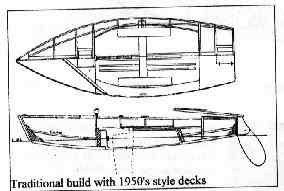
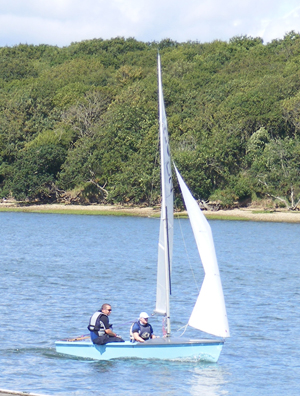


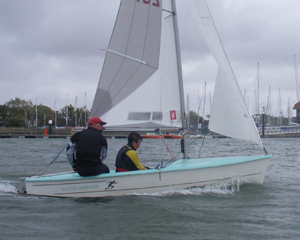
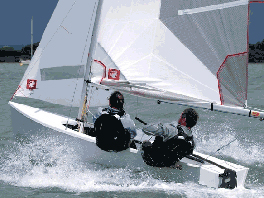
 Our 2024 calendar is filling up...There are still a few events to be confirmed, so keep checking back for updates!
Event
Location
Dates
Sailjuice - King George Gallop
King George S.C.
20th January
Steve...
Our 2024 calendar is filling up...There are still a few events to be confirmed, so keep checking back for updates!
Event
Location
Dates
Sailjuice - King George Gallop
King George S.C.
20th January
Steve...